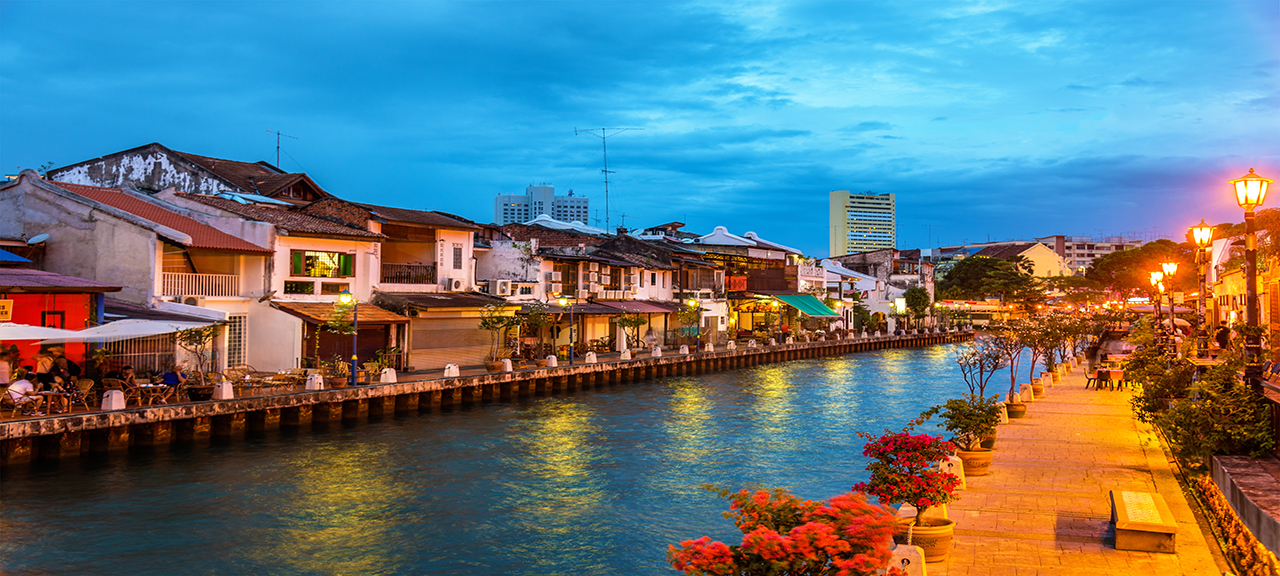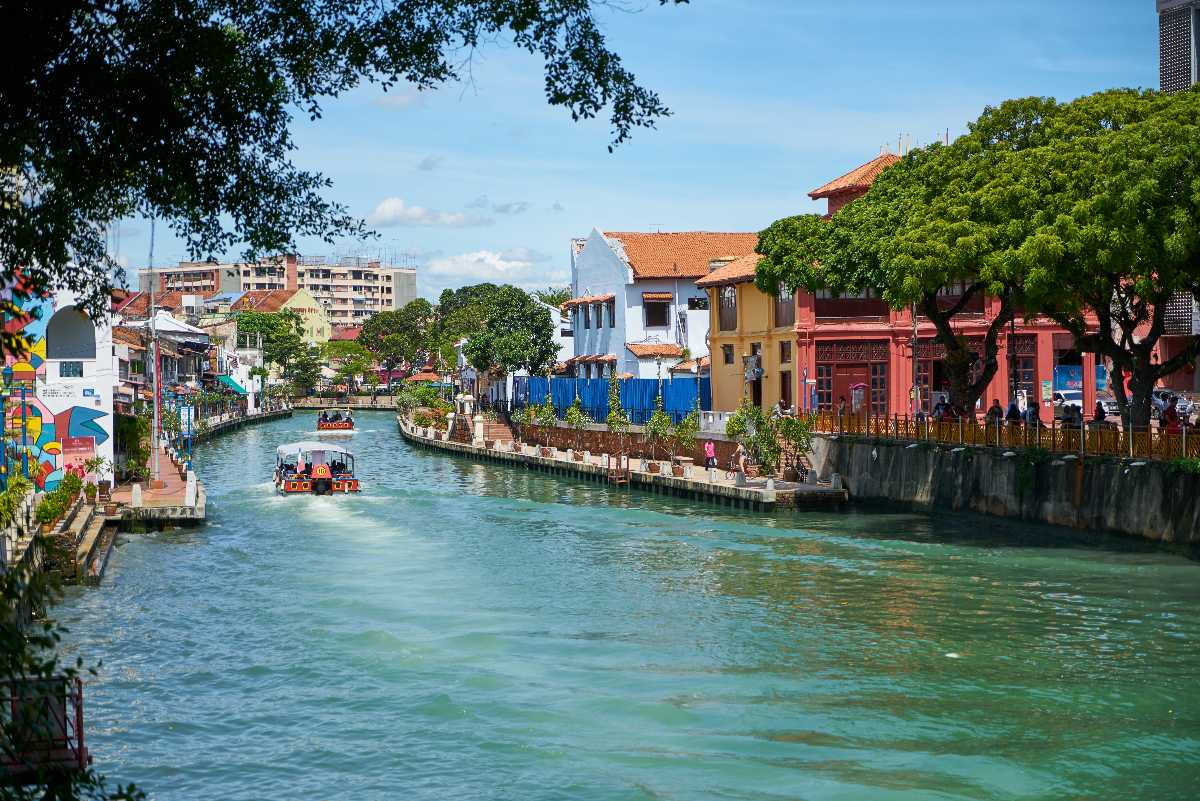



Malacca (or Melaka, as it’s spelled in Malay) is one of Malaysia's oldest and most historically significant cities, located on the west coast of the Peninsular. It is known for its rich cultural heritage, historical landmarks, and diverse blend of Malay, Portuguese, Dutch, and British influences. The city’s historical significance earned it the title of a UNESCO World Heritage Site in 2008. Today, it remains a vibrant destination, drawing visitors with its combination of colonial architecture, bustling streets, and modern attractions.
Peak Season (December to February):
The weather is relatively cooler and dry, making it an ideal time for exploring the city. However, it’s also the most crowded period with more tourists, particularly around public holidays and festive events.
Shoulder Season (March to May, September to November):
The weather is warm, but the crowds are thinner compared to the peak season. It's a great time for sightseeing without dealing with overwhelming tourist traffic.
Off-Season (June to August):
The monsoon season can bring sporadic rain, particularly from the southwest. However, the off-season offers lower prices and less crowded attractions, which is perfect if you don't mind occasional showers.
By Air:
The nearest airport to Malacca is the Melaka International Airport (MKZ), located about 10 km from the city center. While it’s a smaller airport with limited international flights, you can fly here from Kuala Lumpur or other major cities within Malaysia. Alternatively, you can fly to Kuala Lumpur International Airport (KLIA), which is about a 2-hour drive away, and take a bus or car ride to Malacca.
By Bus:
Malacca is well-connected to Kuala Lumpur (about 2 hours away) by express buses. There are also buses from Singapore, Penang, and Ipoh to Malacca.
By Car:
Renting a car and driving to Malacca is easy, and it’s a great way to explore the city at your own pace. The drive from Kuala Lumpur is straightforward via the North-South Expressway (PLUS).
A Famosa (The Famous Fortress):
Built by the Portuguese in 1511, A Famosa is one of the oldest surviving European architectural remnants in Southeast Asia. The iconic St. Paul's Hill and the Porta de Santiago (the gate) are among the key features to explore here.
St. Paul's Church:
Located atop St. Paul's Hill, this church was originally built by the Portuguese in 1521. It’s one of the oldest churches in Southeast Asia, offering panoramic views of the city.
The Stadthuys:
The Stadthuys is a large Dutch colonial building located in Dutch Square. It now houses the Malacca History and Ethnography Museum and is an iconic symbol of the city’s colonial past.
Jonker Street (Jalan Hang Jebat):
This street in Chinatown is famous for its antique shops, vibrant night market, delicious street food, and beautiful colonial-era architecture. It’s the heart of Malacca’s cultural and commercial life.
Malacca Sultanate Palace Museum:
This reconstructed palace is a replica of the 15th-century Sultan’s palace, giving you a glimpse into Malacca’s history and the rich Malay Sultanate era. It’s located near St. Paul's Hill.
Cheng Hoon Teng Temple:
This historic Chinese temple, built in 1645, is one of the oldest active temples in Malaysia. The Cheng Hoon Teng Temple showcases traditional Chinese architectural style and is still used for religious ceremonies.
Melaka River Cruise:
The Melaka River is the heart of the city, and a river cruise is a great way to explore the historic waterfront and admire the city’s charming buildings and bridges.
Explore Jonker Walk:
Jonker Walk is the cultural heart of Malacca, with a mix of antique shops, local crafts, cafes, and delicious street food. It's especially vibrant during the Jonker Street Night Market, held every Friday to Sunday night.
Visit the Malacca Sultanate Watermill:
A unique and historical experience, the Malacca Sultanate Watermill showcases the traditional way watermills were used to process grains. You can see an old-fashioned watermill in action and learn about the Sultanate era.
Malacca River Cruise:
Enjoy a boat tour along the Malacca River, which takes you through the heart of the city. You can see the city's colonial-era buildings, street art, and old warehouses while cruising through the river's calm waters.
Visit the Baba-Nyonya Heritage Museum:
Discover the rich history of the Peranakan or Straits Chinese culture, a mix of Chinese and Malay traditions. This museum provides insight into the lifestyle, clothing, and culture of the Peranakan community.
Try Traditional Malaccan Food:
Explore local food at markets, hawker stalls, or famous eateries in the city. Malacca is famous for Chicken Rice Balls, Satay Celup (skewered meat served with hot dipping sauce), and Cendol (a sweet dessert with shaved ice and coconut milk).
The Majestic Malacca:
A luxurious hotel located along the river with colonial-style architecture. The hotel features elegant rooms, a beautiful pool, and top-notch facilities, making it ideal for a relaxing stay.
Casa del Rio Melaka:
This boutique hotel is set along the Malacca River, offering spacious rooms, a rooftop bar, and a serene atmosphere with great river views. It’s perfect for travelers who want a blend of comfort and historic charm.
Holiday Inn Melaka:
A modern hotel located near the city center with excellent facilities, including a rooftop pool, fitness center, and various dining options. It’s a great choice for both leisure and business travelers.
Hotel Puri Melaka:
A charming boutique hotel with a traditional Peranakan design, located near Jonker Street. This affordable hotel offers comfort, local heritage, and convenience for travelers exploring the historic city.
The Baba House:
A heritage hotel that showcases the unique Baba-Nyonya culture of the city. It offers an authentic local experience with beautifully designed rooms and a great location near major attractions.
Nancy’s Kitchen:
A famous spot for authentic Peranakan (Nyonya) food, Nancy’s Kitchen serves traditional dishes like Ayam Pongteh (braised chicken) and Nyonya Laksa (spicy noodle soup).
Capitol Satay:
A must-try for Satay Celup, a Malaccan specialty where skewered meats are dipped into a boiling pot of satay sauce.
Jonker 88:
Famous for its traditional cendol and Nyonya Laksa, Jonker 88 is a must-visit for local desserts and dishes.
The Coconut House:
This restaurant is known for its fresh coconut-based dishes, including the famous Coconut Shake and coconut-based ice cream. It's a refreshing spot to cool off after exploring the city.
Restoran Tengkera Melaka:
Offering a variety of local Malaccan dishes, Restoran Tengkera is particularly known for its Nasi Lemak and delicious fried chicken.
Multicultural Heritage:
Malacca’s history as a trading port and its time under Portuguese, Dutch, and British rule have shaped the city’s diverse cultural influences. You’ll find a mix of Malay, Chinese, and Indian cultures, reflected in its architecture, cuisine, and traditions.
Peranakan Culture:
The Peranakan (or Straits Chinese) culture is a unique blend of Chinese and Malay customs. This community, historically descended from Chinese immigrants, has influenced Malacca’s art, cuisine, and clothing, particularly evident in the Baba-Nyonya Heritage Museum.
Festivals:
Malacca celebrates a variety of cultural and religious festivals. Chinese New Year, Deepavali, Hari Raya Aidilfitri, and the Malacca River Festival are just a few examples of the vibrant festivities that take place throughout the year.
Local Crafts:
Malacca is known for its local handicrafts, such as Batik textiles, traditional pottery, and wood carvings. These crafts can be found at local markets and shops along Jonker Street.